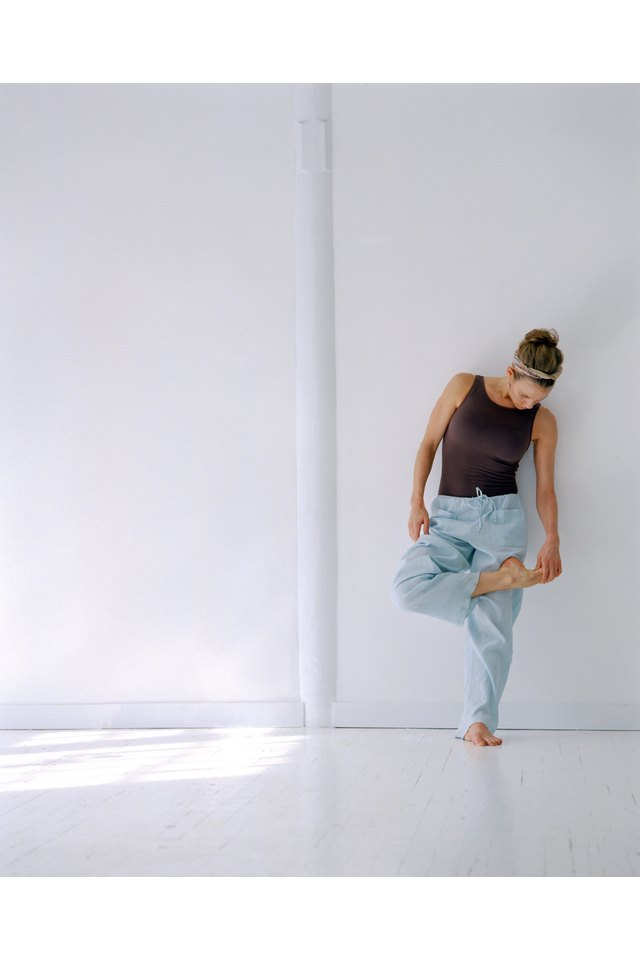How to Pop Your Legs to Hit a Split

A split is a common position for a cheerleader or a dancer. However, for those who are not flexible, splits can be difficult. Stretching over time can help to “pop the legs,” making doing the splits easier. However, you must stretch every day for a period of several months to make this happen.

Creatas Images/Creatas/Getty Images
Stretch both legs every day. Sit on the floor with legs spread apart as far as possible. Lean over the right leg, reaching toward the foot. Hold this position for 15 to 20 seconds. Return to a straight position, and repeat the same stretch with the left leg.
Stretch the hamstrings by sitting on the floor. Extend your left leg, and bend the right knee. Move the right foot so that the sole of the foot is resting inside of the left knee. Lean forward, and reach your hands toward your left foot. Hold this for 15 seconds, and return to a straight position. Repeat the steps for the right leg.

Creatas Images/Creatas/Getty Images
Stand up, and place your right leg on a table, chair or exercise bar, if one is available. Stretch over the leg, reaching for the ankle. Hold this position for 15 to 20 seconds. Lower the leg, and place the opposite leg on the same apparatus.

Creatas Images/Creatas/Getty Images
Sit on the ground once you're fully stretched, and split the legs as far as possible. Be careful not to pull or strain any muscles.
Practice doing the splits every day, pushing the legs farther apart each time, and holding the position for 15- to 20-second intervals. Make sure your legs stay straight, and that your knees are turned away from the body.
Stand up to do a forward-facing split. Turn to the side, and place your right leg in front. Slide the feet farther away from each other. Place both hands out to the sides or on the floor for support and balance. Stop sliding as soon as you feel pain or discomfort. Stay in this position for 30 to 45 seconds, lengthening the time with more practice.
Tips
Complete a variety of stretches to hit all target points of the leg, including the hamstrings, calves, ankles, quads and hips.
Warnings
Stop stretching or doing the splits if you experience pain or discomfort. Attempting the splits with pain could cause injury.
Tips
- Complete a variety of stretches to hit all target points of the leg, including the hamstrings, calves, ankles, quads and hips.
Warnings
- Stop stretching or doing the splits if you experience pain or discomfort. Attempting the splits with pain could cause injury.
